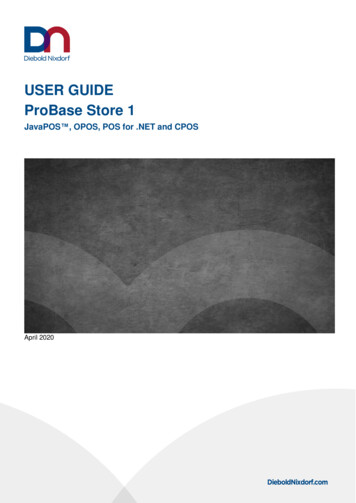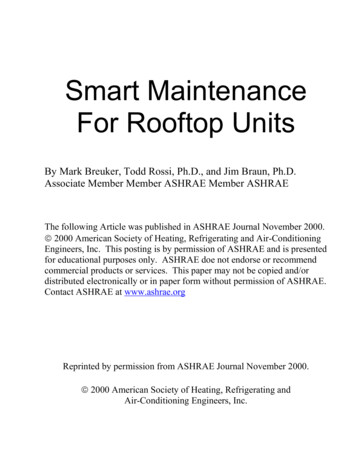
Transcription
Smart MaintenanceFor Rooftop UnitsBy Mark Breuker, Todd Rossi, Ph.D., and Jim Braun, Ph.D.Associate Member Member ASHRAE Member ASHRAEThe following Article was published in ASHRAE Journal November 2000. 2000 American Society of Heating, Refrigerating and Air-ConditioningEngineers, Inc. This posting is by permission of ASHRAE and is presentedfor educational purposes only. ASHRAE doe not endorse or recommendcommercial products or services. This paper may not be copied and/ordistributed electronically or in paper form without permission of ASHRAE.Contact ASHRAE at www.ashrae.orgReprinted by permission from ASHRAE Journal November 2000. 2000 American Society of Heating, Refrigerating andAir-Conditioning Engineers, Inc.
ASHRAE JournalMaintenanceSmart MaintenanceFor Rooftop UnitsBy Mark Breuker, Todd Rossi, Ph.D., and Jim Braun, Ph.D.Associate Member Member ASHRAEMember ASHRAEPackaged HVAC equipment is the most common source for HVACin small and medium commercial buildings, including retail stores,supermarkets, and restaurants. The U.S. Department of Energyestimates that rooftop and unitary air-conditioning equipment accounts forabout 1.03 out of a total of 1.66 quads (62%) of total energy consumptionfor cooling the current building stock of commercial buildings in the UnitedStates. Generally, packaged equipment is smaller, more numerous, and notas well maintained as large built-up systems. Because of the large numbers,service technicians cannot afford to spend much time on each unit. In addition, the units are not located in highly visible equipment rooms where it isconvenient for onsite technicians to visit daily.Rooftop units are often out-of-sight,out-of-mind and completely ignored until performance has degraded to a pointwhere the unit is no longer providing adequate cooling. Based on these facts andtheir own experiences, the authors believethat the actual field performance of rooftop units is degraded from design intentmore severely than their central plantcounterparts. However, additional workis needed to document performance degradations associated with rooftop unitsoperating in the field.Some changes are occurring to improvethe situation. For instance, a growingtrend is outsourcing facility managementservices to companies that specialize infacility maintenance and energy services.In addition, new technologies are beingdeveloped to aid maintenance and service practices. Some service providers areapplying these new technologies to proNovember 2000vide smart maintenance for rooftop airconditioning equipment, for improvingcomfort and reliability while reducingcosts through longer equipment life andlower energy consumption. Since thesecompanies manage large aggregated portfolios of properties and assume energyand maintenance budget responsibilityfor these properties, they have the scaleand the incentives to apply this technology to increase profits and separate theirservice delivery offerings from their competitors.What Is Smart Maintenance?Smart maintenance involves the application of technology to identify whenmaintenance is required and to monitorperformance and diagnose problems morequickly and accurately than through traditional means. A tradeoff exists betweenthe costs associated with providing main-tenance and the associated benefits (improved energy efficiency and longerequipment life). If maintenance inspections are performed too frequently, laborcosts exceed the benefits. On the otherhand, if maintenance is provided too infrequently or not at all, the system degrades, which leads to lower efficiencyand the possibility of premature equipment failure. Deciding when serviceshould be performed is only half of theequation. The other half of smart maintenance is anticipating service needs without relying exclusively on human expertise. This can be accomplished by usingautomated fault diagnostic systems.This article addresses two issues forrooftop air conditioners: identification offaults that drive maintenance costs andperformance degradations, and commonapproaches to smart maintenance thatreduce operating costs.Degradation and FailureTo better understand the types of faultsthat occur in unitary air-conditioningequipment, a database from a HVAC service company that primarily services rooftop air conditioners for retail stores wasAbout the AuthorsMark Breuker is director of nationalenergy accounts at Service Resources, Atlanta. He is a member ofASHRAE Technical Committee 4.11,Smart Building Systems.Todd Rossi, Ph.D., is vice presidentof science and technology at FieldDiagnostic Services, Pa.James E. Braun, Ph.D., is an associate professor of Mechanical Engineering at Purdue University. He is chairman of TC 4.11.ASHRAE Journal41
ASHRAE JournalCauses for’No Air- Conditioning’Service Call% TotalOccurrencesControls Error21%Electrical Prob lem20%Refrig erant LeakGeneral ClassificationOf Faults% of Total ServiceCostsComp ressor24%Controls Error10%12%Cond enser9%Cond enser7%Electrical Prob lem7%Air Hand ling7%Evap orator6%Evap orator6%New Installation6%Comp ressor5%Air Hand ling5%Cooling Water Loop4%Refrig erant Leak5%Plug g ed Filters2%Installation/Startup4%Personnel Error2%Cooling Water Loop4%Exp ansion Device2%Fan Belt2%Can t Classify12%Others18%Table 1: Classification of ‘no air-conditioning’ cases.Table 2: Classification of fault types by total cost.analyzed. The result of this work was originally published inASHRAE s International Journal of Heating, Ventilating, andAir Conditioning and Refrigerating Research (Breuker andBraun 1998a). The database that was used for this work contains more than 6,000 separate fault cases from 1989 to 1995.Frequency of occurrence and total cost of repair for differentfaults were estimated using a statistically representative subsetof the data. Frequency of occurrence information helps to expose the nuisance faults those faults that are not expensive to fix, but cause a periodic loss of comfort and frequentvisits from service technicians. Total cost of repair data targetsthose faults that dominate service costs.Table 1 shows the frequency of occurrence of faults that ledto inadequate building comfort conditions, termed no air conditioning by service personnel. For this classification of faults,approximately 40% of the failures were electrical- or controlsrelated and the other 60% were mechanical. However, motorfailures were classified with the equipment that they power (e.g.,condenser motor fans with condenser). If motor failures arereclassified under the electrical problem category, electricaland control failures accounted for about 60% of the failures,while mechanical problems accounted for 40%.Table 2 shows the service costs associated with repairs as apercentage of the total costs of service provided for differentfaults. Although compressor failures do not occur as frequentlyas other faults, they are the most costly failure for unitary airconditioners. The labor and component costs are high for replacing compressors. The costs associated with controls andelectrical faults are also high due to their high repair frequency.The combined refrigeration cycle faults (condenser, evaporator, air handling, and refrigerant leakage) accounted for approximately 25% of costs.Table 3 gives a cost breakdown of the diagnoses associatedwith compressor faults. Approximately 70% of the classifiedfaults were associated with motor problems. Another importantfault, termed internal bypass/inefficient, refers to a loss incompressor capacity due to compressor valve leakage or otherleakage paths. This fault causes degradation in performancethat is not detected typically until comfort is compromised. Inaddition, both internal bypass and broken compressorinternals can lead to motor failures (open windings, short toground) if the compressor is allowed to operate in this condition for a long time.Conditions that lead to compressor failures were investigatedthrough interactions with industry personnel (McGrue 1995and Janaushek 1995). Although most failures in hermetic compressors are diagnosed as a failure in the motor, these failuresare usually the result of a mechanical problem that overloadsthe motor. Furthermore, the presence of liquid refrigerant in thecompressor is known to be a primary cause of mechanical failures in positive displacement compressors.The presence of liquid in the compression chamber damagesvalves, rods, and pistons. Also, if liquid refrigerant is held inthe compressor during startup (i.e., flooded start), oil is carriedout of the compressor shell, resulting in a temporary loss oflubrication until it circulates around the refrigeration circuit andreturns to the compressor. Cool mornings cause liquid refrigerant to pool in the compressor, resulting in a flooded start. Continuous liquid floodback caused by a lack of suction superheat,cools the compressor body. When the system shuts down, theliquid refrigerant collects in the cool compressor shell, resulting in a flooded start when the system restarts. Since many airconditioners operate with on-off control, a system could gothrough many flooded starts per day if liquid floodback ispresent. Some causes of liquid floodback are fouled evaporatorcoils, fouled condenser coils, refrigerant overcharge, and a faultyTxVs.Other conditions that lead to early compressor failure in-42ASHRAE Journalw w w. a s h r a e j o u r n a l . o r gNovember 2000
Maintenanceclude high compressor temperatures and electrical supply problems, such as low voltage and voltage spikes. High compressortemperatures are caused by condenser fan failures, condenserfouling, liquid line restrictions, and low refrigerant charge.Degradation Faults and PerformanceIn addition to investigating the cause of failures in unitaryair-conditioning equipment, Breuker and Braun (1998a) also investigated the effect of five common degradation faults on performance. These five faults include refrigerant leakage, condenser fouling, evaporator fouling, compressor valve leak-back,and liquid-line restrictions.Table 4 shows the average impact of the five faults on cooling capacity, coefficient of performance (COP), and compressorsuction and discharge temperatures. These performance indices provide a means of comparing the impact of different faultsand quantifying the level at which faults become important.Reductions in capacity and efficiency are important becausethey result in higher energy bills and loss of comfort for thebuilding occupants, whereas no superheat or high dischargetemperatures lead to early compressor failure. Refrigerant leakage, liquid-line restriction, and evaporator fouling have a greatereffect on capacity than COP. Condenser fouling affects COPmore than capacity, and compressor valve leakage affects bothabout the same. Refrigerant leakage, liquid line restriction, andcondenser fouling lead to higher compressor temperatures.Evaporator fouling, compressor valve leakage, and condenserfouling cause low suction superheat.Typical Maintenance ProgramsAs the preceding discussion shows, the effect of degradation faults on rooftop unit performance and equipment life issignificant and provides strong incentives to keep up with rooftop unit maintenance. However, many rooftop units in noncritical applications are only serviced upon failure of a majorcomponent or when the extreme loss of performance leads tothe system no longer providing sufficient cooling capacity tomaintain building comfort. Although this approach achievessavings in the short term (since no money is spent on maintenance), it is expected that higher energy consumption and shortened equipment life will result in higher overall operating expenses as compared with application of smart maintenance.However, more work is needed to document the energy penalties and reduced life associated with minimal maintenance practices.Common ways to intelligently perform rooftop unit maintenance that are discussed include: scheduled preventative maintenance; responding to information obtained from remote monitoring; and condition-based maintenance based on automatedfault detection and diagnostic (FDD) systems.Scheduled Preventative MaintenanceScheduled preventative maintenance is a common way toensure consistent and efficient performance from a rooftop airconditioning unit. Types of work that usually are part of a preventative maintenance on a rooftop unit include: Changing the filter.November 2000Description of Compressor Fault% of TotalCategory CostShort to g round25%Op en wind ing s17%Locked rotor16%Broken comp ressor internals11%Internal b yp ass/inefficient8%Other rep lacements19%Other non-rep lacement p rob lems4%Table 3: Compressor fault cost breakdown. Using refrigeration cycle measurements to check refrigerant charge levels and the need to clean heat exchangers. Inspecting/replacing belt. Checking fan bearings and lubricate if appropriate. Inspecting condensate drain. Inspecting electrical system, including a visual inspection for contactor wear. Checking economizer motion.Filter-changing and inspection schedules can vary greatlydepending on the application of the equipment. Filters can bechanged as frequently as once per month or once per yeardepending on airborne dirt levels at the facility. Mechanicalequipment inspection schedules generally occur once or twiceduring both the heating and cooling seasons. Monthly inspections of all equipment may be used in critical applications.If the environment is predictable and the inspection schedules are tailored specifically to the application, then preventative maintenance can accomplish the first goal of smart maintenance (providing service visits only when required). However,because of the unpredictability of many applications, more advanced techniques are often required to achieve this goal.EMS MonitoringMore and more often, managers of small- to mid-size buildings that typically use rooftop units are specifying low-costenergy management systems (EMS). The increase in the number of EMS systems in small buildings and the accessibility tocommunication technologies are enabling remote monitoringof large portfolios of properties from a central monitoring center. Rooftop units that are tied into an EMS can have a highlevel inspection performed without having a trained techniciansetting foot on the roof. With remote monitoring, a techniciancontacts the EMS system in a building on a regular basis toverify scheduling of equipment, change schedules and controlstrategies, and download alarms and trend data. Downloadeddata gives the monitoring technician the ability to make anassessment of the building s overall performance and the performance of major subsystems in the HVAC system.What kind of rooftop unit maintenance needs can be detected via remote monitoring of typical EMS systems? Thisdepends on the type of sensors that are available on the roofASHRAE Journal43
ASHRAE JournalChange s in rooftop ope ration due to re frige rant le akage(% le akage )% Change inCapacity% Change in COPChange in Tsh ( F)Change in Thg ( .08.04.611.110.0Change s in rooftop ope ration due to liquid line re striction(% DP)% Change inCapacity% Change in COPChange in Tsh ( F)Change in Thg ( 0.017.28.716.016.6Change s in rooftop ope ration due to compre ssor valve le akageFault Le ve l(% D hn)% Change inCapacity% Change in COPChange in Tsh ( F)Change in Thg ( 521.323.8-11.80.6Change s in rooftop ope ration due to conde nse r fouling(% are a block)% Change inCapacity% Change in COPChange in Tsh ( F)Change in Thg ( 917.911.24.5Change s in rooftop ope ration due to e vaporator fouling(% D airflow)% Change inCapacity% Change in hange in Tsh ( F)Change in Thg ( F)Table 4: Effect of degradation faults on a 3-ton (10.6 kW) rooftop unit with a fixed-orifice expansion device.44ASHRAE Journalw w w. a s h r a e j o u r n a l . o r gNovember 2000
Maintenancetop units tied into the EMS system. Inthe extreme case, the technician couldexamine temperatures and pressures required to perform basic diagnostics. Forexample, a differential pressure signal canbe used to spot a filter in need of replacement. An evaporator pressure and suction temperature could be used to flag anexcessively low or high refrigerant superheat at the inlet to the compressor. Inreality, however, this level of instrumentation is usually not available on rooftopunits.In more cases, detection of a loss ofperformance is the best that can beachieved via remote EMS monitoring. Forexample, the monitoring of rooftop unitcycling frequency as a function of theindoor and outdoor temperature, or therate at which the system can achieve thecooling setpoint after a night setback,both provide an early indication of capacity loss resulting from degradationfaults. Once a potential problem is spotted via remote monitoring, a trained technician can be dispatched to the buildingfor a more detailed diagnosis of the problem and resulting repair.Early Detection & DiagnosisOf Degradation FaultsRossi and Braun (1997) developed atechnique that uses only temperaturemeasurements to detect and diagnosefive commonly occurring faults in rooftop air-conditioning systems. Thismethod relies on a steady-state modelto predict seven temperatures used bythe method as a function of three driving conditions, outdoor air temperature, return air temperature, and returnair humidity. Detection and diagnosisare accomplished statistically, so theuncertainly of the measurements andmodel predictions must be estimatedproperly for the technique to work.Breuker and Braun (1998b) tested thesensitivity of the FDD method in alaboratory setting. The rooftop airconditioning unit was operated in asimulated building using typical onoff control over a range of operatingconditions and fault levels.FDD TechnologyThe ideal maintenance program would maintain comfort andsafe equipment operation at minimum combined service andenergy costs (Rossi and Braun, 1996). The effective use ofequipment performance information to manage the service process is the key to approaching this ideal.Obtaining equipment performance information is an important first step. Placing cost aside, permanently installing sensors (e.g., refrigerant pressure, refrigerant temperature, secondary fluid temperatures and power consumption) on every rooftop unit and processing the data intelligently via on-board computers to determine service needs is ideal. However, the cost ofinstrumenting each system can be relatively high compared tothe savings potential. An alternative approach is to provideservice technicians with intelligent tools allowing expensivecomponents to be used repetitively on different units. A varietyof hybrid approaches also makes sense. The best approachdepends on how critical the application is and how labor andinstrumentation costs compare.Once performance information is available, it is important tointegrate it into the service management process to achieve thecost reduction and reliability improvement goals. This can bedone by using the information to anticipate when performancedegradations (e.g., dirty filters and coils) justify servicing, verifying that service was performed successfully, calling for immediate emergency service when unanticipated failures occur, andprioritizing service by overall cost. The authors have been involved with several studies that have helped lay the groundNovember 2000What conclusions were reachedfrom this work?Good performance was achieved indetecting and diagnosing five faultsusing a low-cost design with only sixtemperatures (two input and four output) and linear models. Refrigerantleakage, condenser fouling, and liquidline restriction were detected and diagnosed before an 8% reduction in capacity or COP occurred. The technique was less sensitive to evaporator fouling and compressor valve leakage, but was still able to detect anddiagnose compressor valve leakagebefore a 12% reduction and evaporator fouling near a 20% reduction incapacity and COP. On average, the performance improved by about a factorof two when ten measurements (threeinput and seven output) and higherorder models were used.work for achieving this vision, including: Identification of important faults (Breuker and Braun1998a). Development of rooftop unit modeling tools for predicting the effects of faults on performance (Rossi 1995, Rossiand Braun 1999, Leroy et al. 2000). Development of cost effective fault detection and diagnostic methods (Rossi and Braun 1997). Development of optimal service scheduling algorithms(Rossi and Braun 1996). Laboratory performance evaluations (Breuker and Braun1998b).Commercial products are available that provide performanceassessments and automated diagnostics for rooftop units. However, much work is still needed to achieve smart maintenance. In particular, a need exists to evaluate the overall benefits associated with applying FDD technologies on a widespread basis.This is a difficult problem, because the benefits include manydifferent aspects that may be difficult or require a lot of data toquantify, including reduced utility costs, reduced service costs,increased equipment life, and increased occupant productivitydue to reduced downtime and better comfort conditions. Decision makers need this information to justify the investmentsnecessary to put this technology into practice.One important step toward the widespread application ofFDD would be for service organizations and facility managersASHRAE Journal45
ASHRAE Journalto integrate equipment performance information into their management processes. This step should help encourage the further development of integrated performance measurement andservice management tools. When this is accomplished, it ishoped that the resulting products will address many issuesservice organizations face today. For instance: The shortage of skilled labor could be addressed, sinceFDD tools should enhance and support all technician skilllevels. A new level of customer service could be achieved throughdocumentation of the need for service and the anticipatedbenefits, providing more consistent service, and verifying that service was done properly and what actual benefits were achieved. Outcomes management programs based partially on equipment performance information could be used as a basisfor evaluating and compensating field personnel.ReferencesBreuker, M.S. and J.E. Braun. 1998a. Common faults andtheir impacts for rooftop air conditioners. International Journal of Heating, Ventilating, and Air Conditioning and Refrigerating Research 4(3):303 318.Breuker, M.S. and J.E. Braun, 1998b. Evaluating the performance of a fault detection and diagnostic system for vaporcompression equipment. International Journal of Heating,Ventilating, and Air Conditioning and Refrigerating Research,4 (4):401 425.Janaushek, N. 1995. Personal communication, Reliability Engineer, Carrier Corporation, Syracuse, N.Y.LeRoy, J.T., E.A. Groll, and J.E. Braun. 2000. Evaluating theaccuracy of public-domain simulation model Purez in predicting the performance of unitary equipment. ASHRAE Transactions 106(1).McGrue, J. 1995. Personal communication, President, UnitedRebuilders, Mt. Vernon, N.Y.Rossi, T.M. 1995. Detection, Diagnosis, and Evaluation ofFaults in Vapor Compression Cycle Equipment. Doctoral Thesis, School of Mechanical Engineering, Purdue University.ASHRAE TC 4.11,Smart Building SystemsASHRAE Technical Committee (TC) 4.11, Smart BuildingSystems, is concerned with the development and evaluationof technologies that could enable the widespread application of smart building systems. Smart buildings should take advantage of automation,communications, and data analysis technologies to operatein the most cost-effective manner.This implies integration of building services such as HVAC,fire, security, and transportation; the automation of manyoperation and maintenance functions traditionally performedby humans; and the interaction with outside service providers such as utilities, energy providers, and aggregators. Currently, three subcommittees form the backbone of the TC sactivities: technology development, communications andintegration, and testing and evaluation.Much of the current work in the committee revolves aroundautomated fault detection and diagnostics.To become involved in the committee, contact Jim Braun,the TC 4.11 chair, at jbraun@ecn.purdue.edu.Rossi, T.M. and J.E. Braun. 1996. Minimizing operating costsof vapor compression equipment with optimal service scheduling. International Journal of Heating, Ventilating, and AirConditioning and Refrigerating Research 2(1):23 47.Rossi, T.M. and J.E. Braun. 1997. A statistical, rule-basedfault detection and diagnostic method for vapor compressionair conditioners. International Journal of Heating, Ventilating, and Air Conditioning and Refrigerating Research 3(1):19 37.Rossi, T.M. and J.E. Braun. 1999. A real-time transient modelfor air conditioners. Proceedings of the IIR 28th Congress ofRefrigeration on Refrigeration into the Third MillenniumSydney, Australia.Advertisement for the print editionformerly in this space.46ASHRAE Journalw w w. a s h r a e j o u r n a l . o r gNovember 2000
Scheduled Preventative Maintenance Scheduled preventative maintenance is a common way to ensure consistent and efficient performance from a rooftop air conditioning unit. Types of work that usually are part of a pre-ventative maintenance on a rooftop unit include: Ł Changing the filter. Ł Using refrigeration cycle measurements to check refriger-

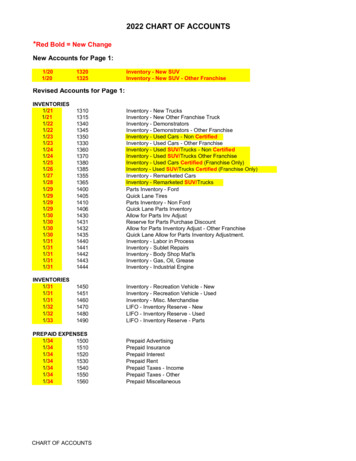


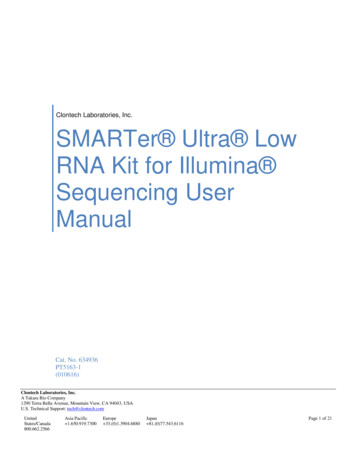

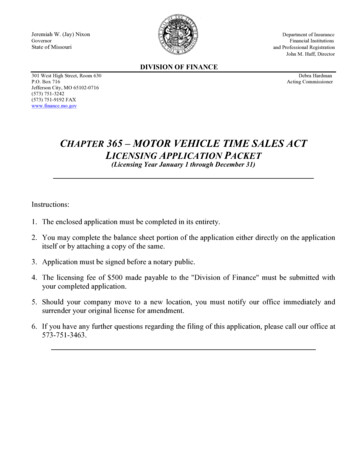
![Smarter Battery Crack [2022-Latest]](/img/13/eliamari.jpg)


